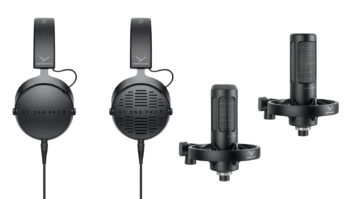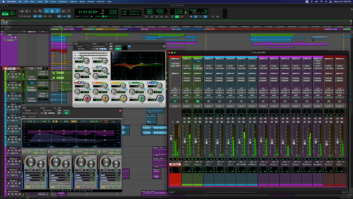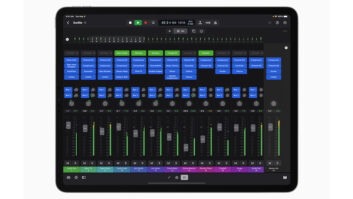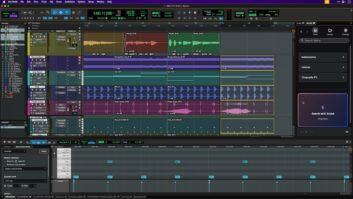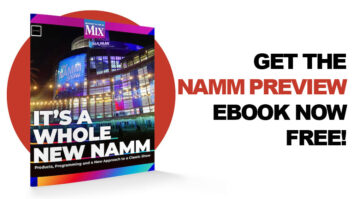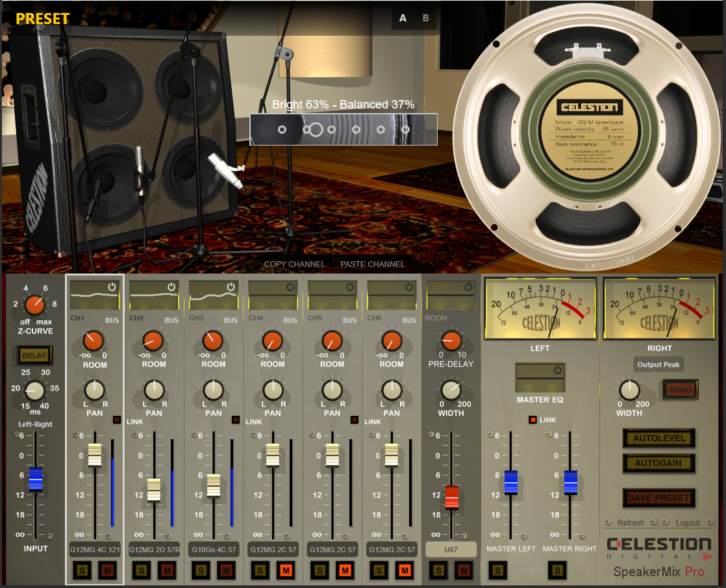
One of the key enablers of digital musicmaking technology is the Impulse Response (IR), a digital snapshot of the equipment’s acoustic behavior. You can capture an IR from anything that outputs sound; in each case, the result is described as a mathematical formula, laid out as data in an audio format file. The IR is digitally combined with an input signal in order to add a tonal characteristic to the input.
In 2016, uninspired by the guitar speaker IRs on the market at the time (including third-party captures of our own products), Celestion set about creating genuine Celestion Impulse Responses, enabling users to access the most accurate and immersive IR speaker tones available.
SPEAKERMIX PRO
It became clear a companion piece of software making Celestion IRs easy and convenient to use for digital recording was necessary. SpeakerMix Pro is the result. It’s a professional, studio-grade plug-in for digital audio workstations (DAWs) affording unprecedented speaker response control as it enables recording engineers to track and mix up to six channels, combining speaker responses without having to worry about real-world recording problems like phase matching.
SpeakerMix Pro allows the fine-tuning of microphone positions with just a few small adjustments, and also enables the incorporation of room responses. One standout feature is the unique “Z-curve” function, closely modeling the dynamic electrical coupling between amp and speaker for unprecedented control over a virtual amplifier’s output stage: it’s a smart way to control the digital representation of the amp as it relates to a digital speaker.
DYNAMIC SPEAKER RESPONSE DSR
A loudspeaker responds in a distinctly nonlinear way to a signal. The complex vibration patterns of the cone and its interaction with the electromagnetic circuit result in a rich harmonic coloration that shapes the input (guitar) signal.
This nonlinear behavior is intimately related to the dynamics of the input and the playing style of the guitarist. Every change in level and style alters the “feel”—the harmonic response of the loudspeaker—which is what some say is lacking in the world of digital tone. By capturing these nuances, it’s possible to add “analog realism” to the digital tonal model, incorporating dynamic elements that would otherwise be missing.
Using specialized nonlinear modeling techniques, Celestion has developed a method of speaker tone simulation more immersive and convincing than a traditional, linear Impulse Response: we call it Dynamic Speaker Response and genuinely believe that it is a great leap forward in digital tone.
The DSR algorithm allows a low-CPU load, component-level, nonlinear model to be tuned exactly to the behavior of the real guitar speaker. It’s a precise, multi-dimensional model that enables us to incorporate the nonlinearities, interactions and dynamics synonymous with “feel” and “realism.”
The tuning algorithm takes this behavioral data and combines it with the frequency domain properties of the speaker’s Impulse Response. Once this DSR model is tuned and optimized, the IR is disregarded. The nonlinear DSR structure is also dependent on the input power that drives the speaker. Just as a regular speaker would react differently depending on the level input power, so does the DSR.
The power-dependent properties are captured from the physical speaker, are specific to every guitar speaker and can be controlled in the plug-in, which drives “digital power” into the DSR from 1 Watt to the maximum power of the speaker, contributing further dynamic, harmonic “information” to the DSR that’s relative to the electrical power input.
New Products – June 2021
The component-level, power-dependent structure of DSRs results in each DSR having a realistic, frequency-dependent electrical impedance. The model’s impedance is supplemented by sophisticated tuning in the DSR algorithm, so it behaves exactly like the real thing. Coupled with the Z-Curve functionality, the perceived realism is even more impressive.
The DSR process is also backward-compatible. A user’s own IRs, once loaded into SpeakerMix Pro, can be tuned by the algorithm into a “DSRLite format,” using a generalized nonlinear dataset (rather than the “speaker-specific” dataset used with the full DSR), and then optimized using the original IR’s response, enhancing the sound and feel of legacy IR libraries in fractions of a millisecond. It’s another unique property of SpeakerMix Pro that means it can be integrated into an engineer’s workflow with minimal disruption: use IRs or DSRs, or a combination of the two, whatever works for the project.
SpeakerMix Pro has been developed with a specific purpose in mind: to combine a sophisticated and highly usable functionality set geared to the needs of the recording engineer, together with truly ground-breaking new technology, with the goal of providing the next generation of digital guitar speaker tone in a convenient and familiar software format.
John Paice heads marketing and artist relations at Celestion.
Celestion • www.celestionplus.com

